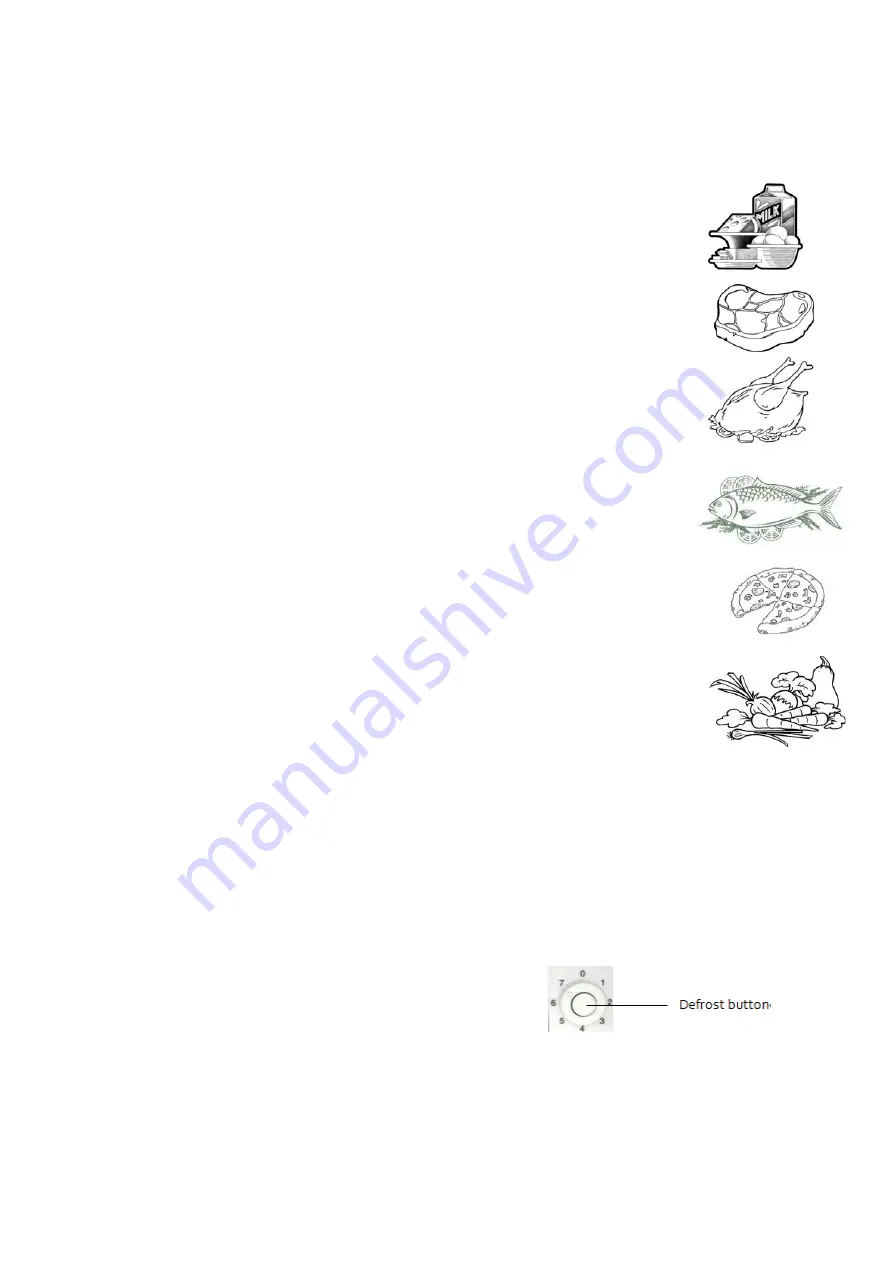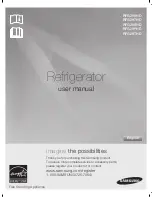
For best results:
Store foods that are very fresh and of good quality.
Ensure that food is well wrapped or covered before it is stored. This will prevent food from dehydrating, deteriorating in colour or losing taste and will
help maintain freshness. It will also prevent odour transfer. Vegetables and fruit need not be wrapped if they are stored in the vegetable container of
the fridge.
Make sure that strong smelling foods are wrapped or covered and stored away from foods such as butter, milk and cream which can be tainted by
strong odours.
Cool hot foods down before placing them in the fridge.
Dairy foods and eggs
Most pre-packed dairy foods have a recommended ‘use by /best before/best by/ date stamped on them. Store them in the
fridge and use within the recommended time.
Butter can become tainted by strong smelling foods so it is best stored in a sealed container.
Eggs should be stored in the fridge.
Red meat
Place fresh red meat on a plate and loosely cover with waxed paper, plastic wrap or foil.
Store cooked and raw meat on separate plates. This will prevent any juice lost from the raw meat from contaminating the
cooked product.
Poultry
Fresh whole birds should be rinsed inside and out with cold running water, dried and placed on a plate. Cover loosely with
plastic wrap or foil.
Poultry pieces should also be stored this way. Whole poultry should never be stuffed until just before cooking, otherwise
food poisoning may result.
Cool and refrigerate cooked poultry quickly. Remove stuffing from poultry and store separately.
Fish and seafood
Whole fish and fillets should be used on the day of purchase. Until required, refrigerate on a plate loosely covered with
plastic wrap, waxed paper or foil.
If storing overnight or longer, take particular care to select very fresh fish. Whole fish should be rinsed in cold water to
remove loose scales and dirt and then patted dry with paper towels. Place whole fish or fillets in a sealed plastic bag.
Keep shellfish chilled at all times. Use within 1 – 2 days.
Precooked foods and leftovers
These should be stored in suitable covered containers so that the food will not dry out.
Keep for only 1 – 2 days.
Reheat leftovers only once and until steaming hot.
Vegetable container
The vegetable container is the optimum storage location for fresh fruit and vegetables.
Take care not to store the following at temperatures of less than 7°C for long periods:
Citrus fruit, melons, aubergines, pineapple, papaya, courgettes, passion fruit, cucumber, peppers, tomatoes.
Undesirable changes will occur at low temperatures such as softening of the flesh, browning and/or accelerated decaying.
Do not refrigerate avocados (until they are ripe), bananas, mangoes.
MAKING ICE CUBES
Fill the ice cube tray (not supplied) with ¾ full of drinking water and place in the ice box.
If the ice cube tray is stuck to the ice box, loosen with a blunt tool only.
To loosen the ice cubes, twist the ice cube tray slightly or hold briefly under flowing water.
NOTE:
This ice box is not a true ice-making or freezer compartment, and may not keep ice cream frozen, or freeze items.
The temperature in this ice box does not get cold enough to freeze food safely. A colder setting can be used, but other items in the fridge may
also be affected.
DEFROSTING
DOOR CONVERSION
If you need to hinge your door on the opposite side it is recommended that you call your local authorised service agent to make this conversion
EN-3
Defrost the refrigerator when the frost is more than 3mm thick.
To defrost, simply press the defrost button on the temperature control knob.
Be sure to keep the drip tray in place.
The refrigerator will restart automatically when defrosting ends.
Empty water from the drip tray after defrosting.
Defrost the refrigerator when the frost is more than 3mm thick.
Defrost the refrigerator when the frost is more than 3mm thick.
DEFROSTING
DEFROSTING
Downloaded from www.vandenborre.be






































